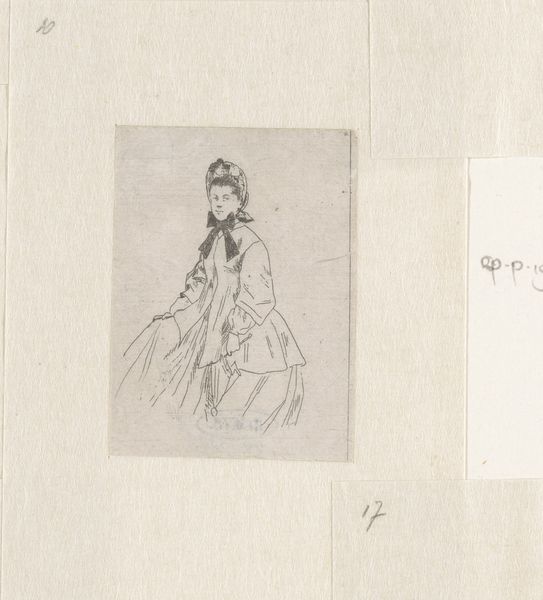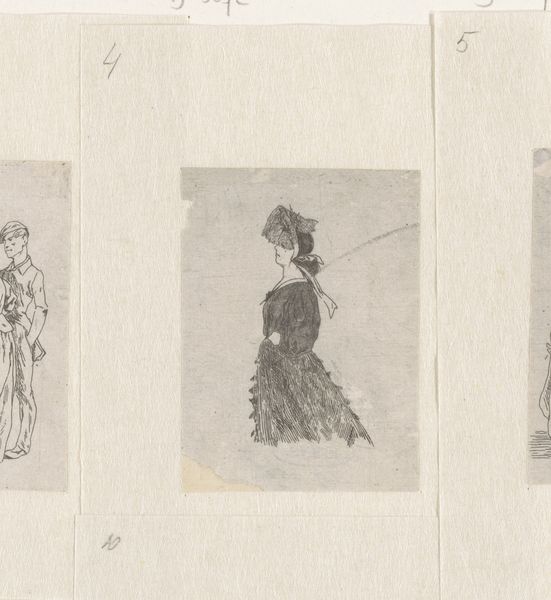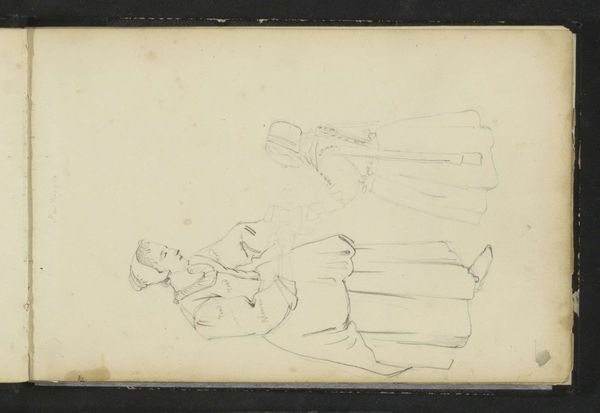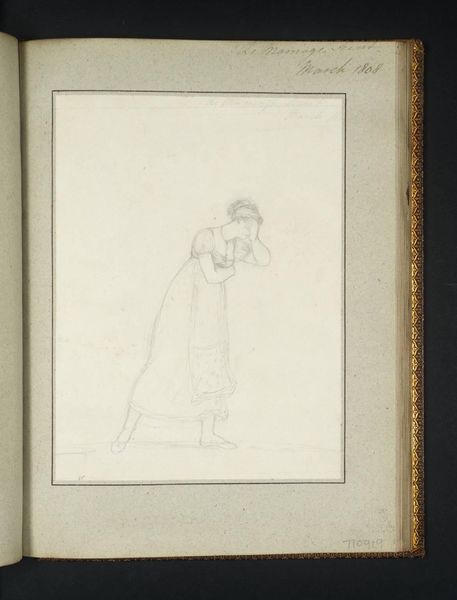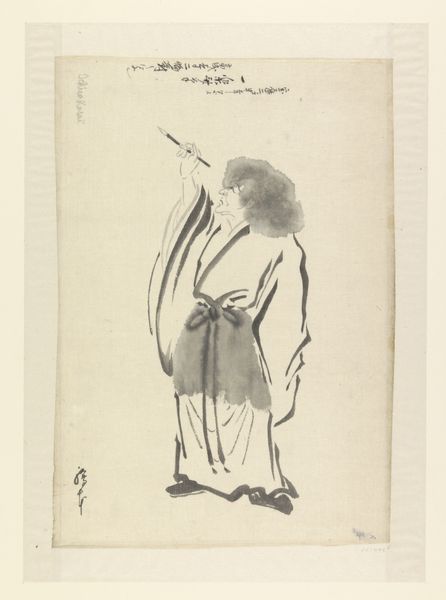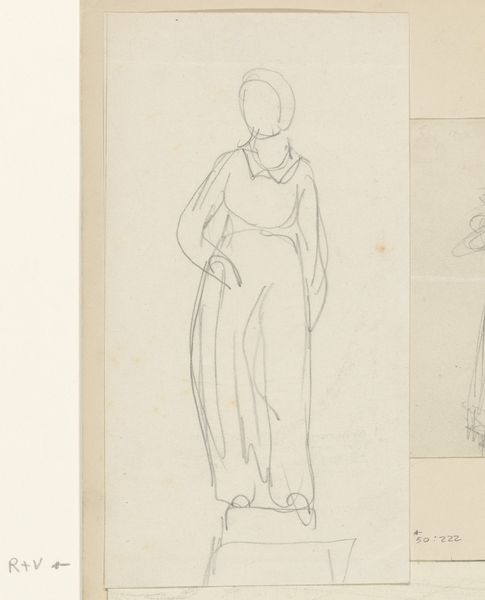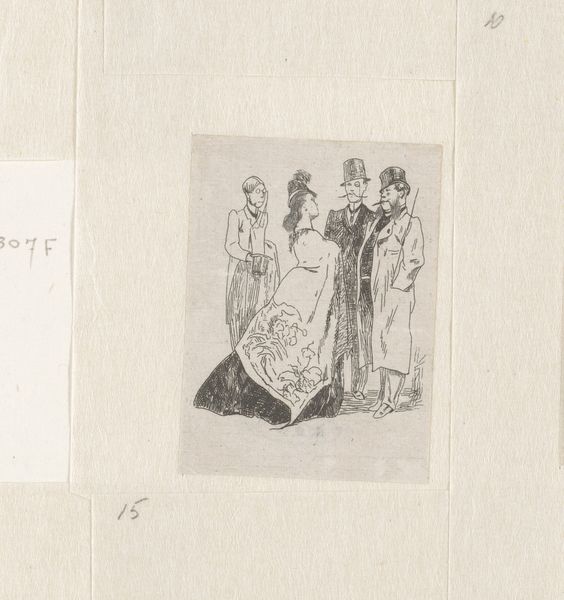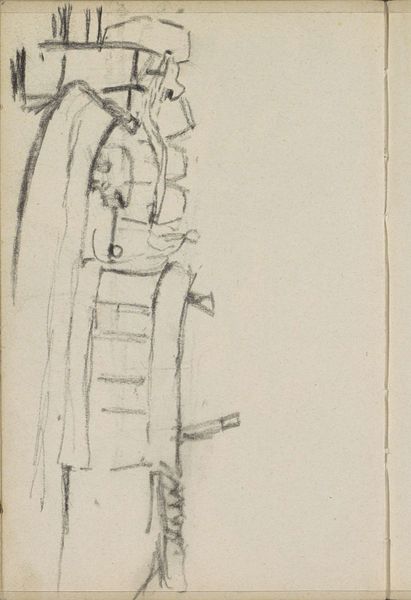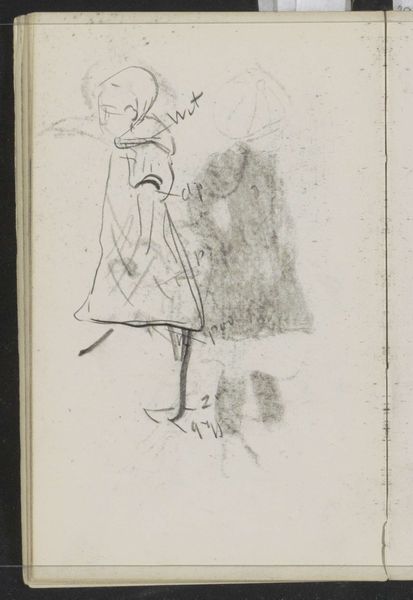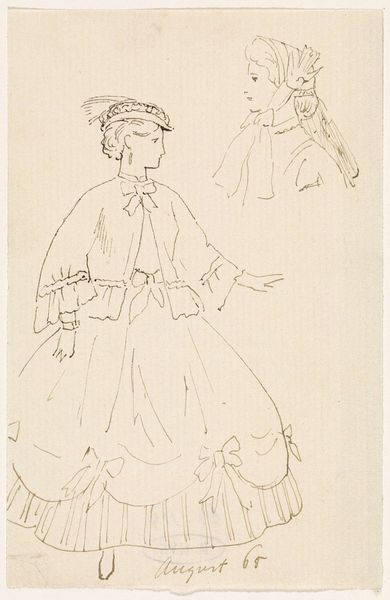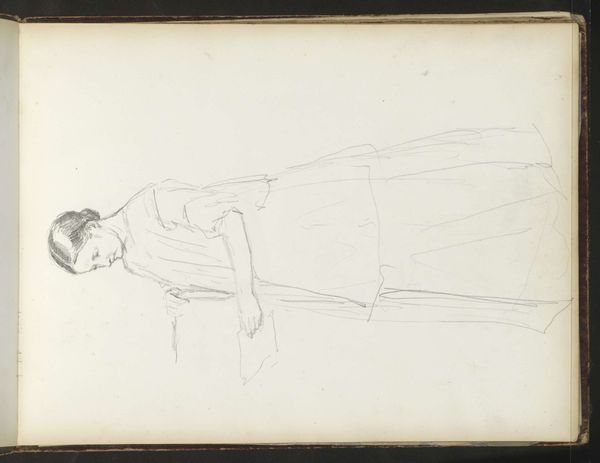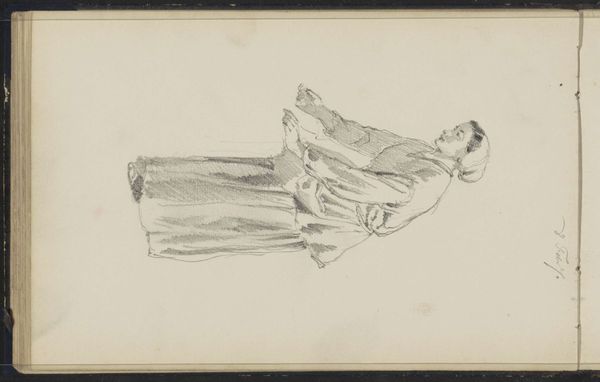
drawing, paper, pencil
#
portrait
#
drawing
#
figuration
#
paper
#
intimism
#
pencil
#
academic-art
#
modernism
Copyright: Rijks Museum: Open Domain
Editor: This drawing, "Standing Woman in a Long Dress," by Gerrit Willem Dijsselhof, was created around 1901 using pencil on paper. It has a quiet, almost introspective quality. What can you tell me about this work? Curator: Look closely at the surface, at the texture of the paper, the quality of the pencil lines. Dijsselhof's choice of these accessible materials is critical. It wasn't about creating a lavish, finished product. What does the use of readily available paper and pencil suggest about the artist's process and his intended audience? Editor: That it was possibly a preliminary sketch? That this artwork isn’t necessarily meant to be high art, but that the everyday person can see themselves creating a piece like this using similar readily available materials. Curator: Precisely. Now, consider the woman’s dress. It appears simple, almost utilitarian. What might that signify about the societal role assigned to women during the artist’s time? Think about labor, domesticity, and class. The production of clothing, its accessibility or lack thereof, were highly gendered experiences. Editor: So the drawing highlights the working-class woman and challenges the perception of women during that time? The work invites a connection between the viewer and the female figure depicted, highlighting that she too, might be an individual who simply wants to exist. Curator: Exactly. By using these simple materials and focusing on a seemingly ordinary subject, Dijsselhof shifts our focus from idealized beauty to the everyday existence of women, prompting us to examine the societal forces that shaped their lives. It allows us to consider labor and materiality. It encourages an important dialogue regarding women in that historical time, making it much more about the human aspect rather than pure artistic technique. Editor: It's fascinating how focusing on materials and context opens up such a rich understanding. Curator: Absolutely. It reminds us that art is not just about aesthetics but also about the material conditions that enable its creation and reception, making labor more accessible.
Comments
No comments
Be the first to comment and join the conversation on the ultimate creative platform.
